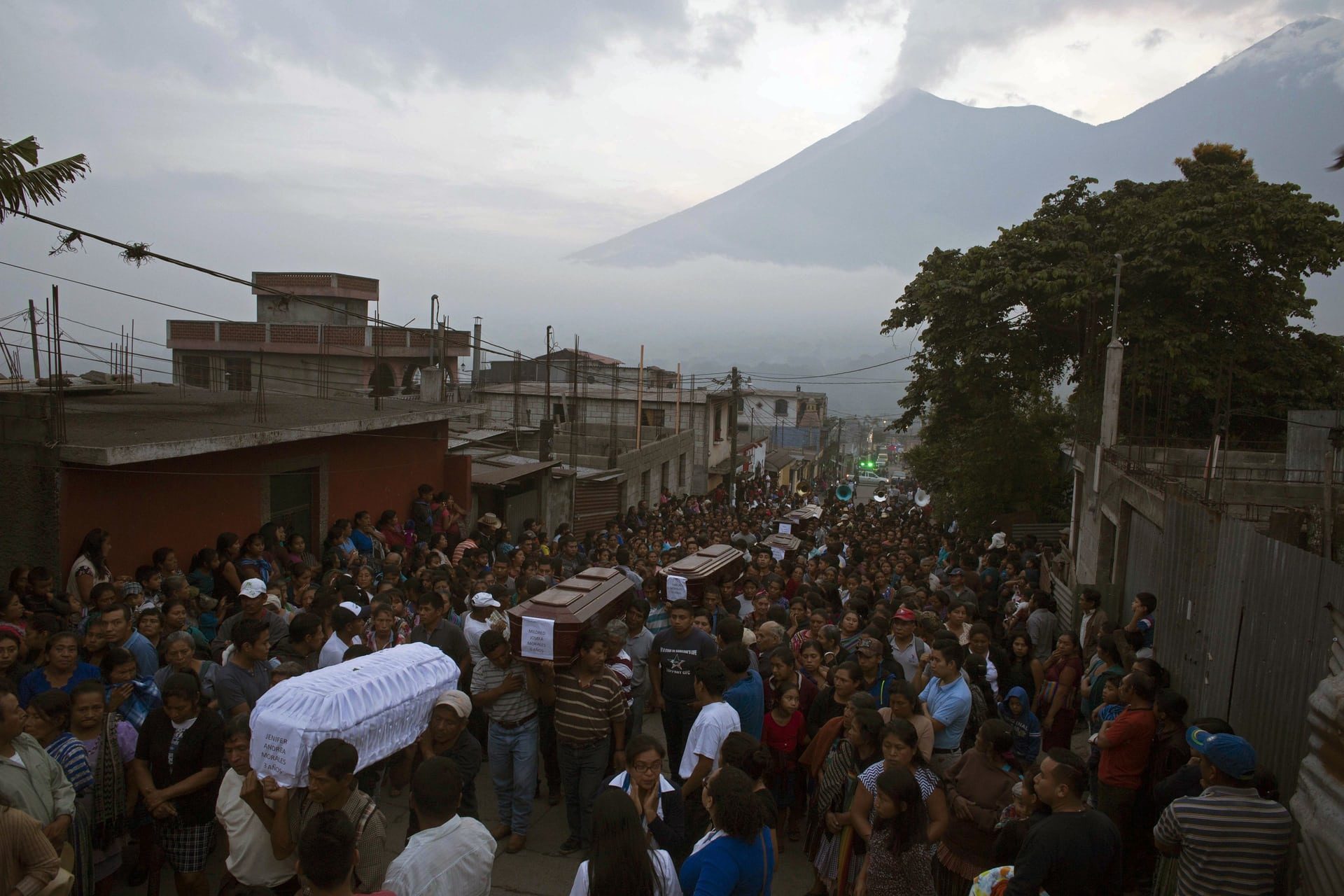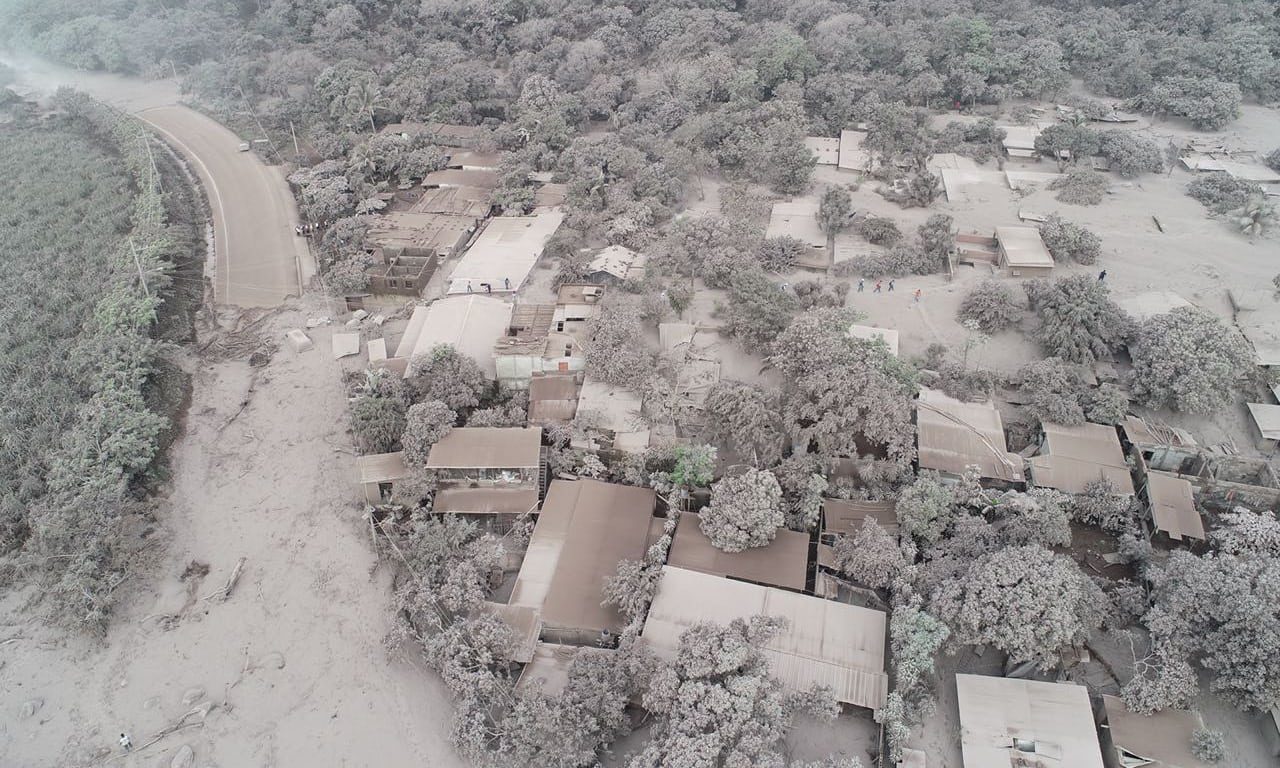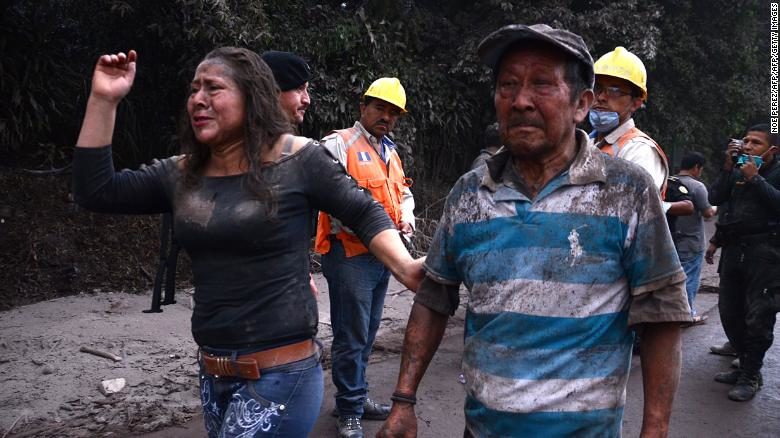A rescue crew emerges from an immense cloud of fine grey dust carrying two stretchers that hold bodies recovered from houses engulfed by blistering lava from the nearby erupting Fuego volcano.
The recovered bodies are tightly wrapped in dusty white sheets. One barely fills half the stretcher - a young victim of the most deadly volcanic eruption to hit Guatemala in decades.
The official death toll from the Fuego disaster is 69 but the final number is likely to be far higher, with scores of people missing from dozens of communities cut off by the devastation.
Comment: That number has since been revised to 75. Another 200 people are missing.
'It is terrible up there'
In the rural community of San Miguel Los Lotes, a group of municipal firefighters pulled out out 15 bodies on Monday morning, including four children and their pregnant mother who didn't have time to escape the powerful pyroclastic flows - fast-moving mixtures of gas and volcanic matter discharged by the exploding volcano.
Another rescue team recovered 14 people, including several children, and reported encountering eight-to-ten-metre high mounds of volcanic ash. The most common cause of death was asphyxia, followed by burns.
"The houses became ovens, and the village a crematorium. There are no survivors," says volunteer firefighter Francisco Flores.
"There is so much ash it's like a massive beach but with trees and rocks thrown in, it's terrible up there," adds Flores while taking a break to eat a sandwich and close his eyes for a few minutes by the side of the road.

Photograph:
Beside Flores rests Angel Solis, another volunteer, who is comforting a terrified puppy the crew found hiding under a bed in a house where the rest of the family were killed. On Monday, rescue workers tenderly carried out to safety several injured dogs, a pig, ducks and chickens, but no humans.
This entire hillside community has been devastated by Sunday's eruption which took place without warning just before midday. The toxic mix of lava, ash and gas engulfed entire houses inside which dozens and dozens of people are feared to have been trapped as they prepared to eat lunch.
Those who managed to escape have sought refuge in makeshift shelters set-up in churches and schools in the nearby town of Escuintla.
'Shall I go to the morgue?'
Isabel Pineda, 25, spent all morning going from shelter to shelter looking for her younger sister who lived in a small house on the main road into San Miguel. But she could not find Patricia Pineda, 21, a business administration student, and her phone is switched off. No one has heard from her since the volcano erupted.
From the cordon, Pineda points out where the house was, but in its place is nothing but clouds of grey dust. Beyond the dust, the road is ruined and inaccessible. "No one is coming out of there alive, they should check in the morgue," says one rescue worker in a hushed tone.
Fuego - which means fire in Spanish - is located less than 50km west of the capital Guatemala City and is one of the most active volcanos in Central America. Sunday's eruption was the second so far this year.
The build-up of energy inside the volcano generated an explosion that resulted in a second, lower crater forming alongside the spewing Fuego basin. The torrent of molten lava stretched at least five miles long crushing bridges, roads and buildings in its path. The lava reached record temperatures of about 700C.
Employing a mix of heavy machinery, shovels and picks, the rescue workers have cleared narrow paths in order to try and safely access houses, but 24 hours after the initial eruption a hundred or so homes in this village alone remain blanketed in volcanic matter and too dangerous to enter.
"Every time we lift off a metal roof a huge gush of steam rises out of the building," rescue worker Juan Diego Alvarez tells the Guardian. "The ash is just too hot for us to work." Nearby lie several pairs of abandoned burnt boots, melted by the boiling ash.

Authorities fear that heavy rains expected later this week could turn tonnes of ash into rivers of mud strong enough to hurl bodies and debris down the foothills.
Meanwhile the morgues are filling up.
Juan Ortiz, 60, cycles towards the cordon where hundreds of soldiers, police officers, firefighters and volunteers are waiting for conditions to improve so they can resume the search for victims. His 28-year-old son is missing. Earlier, Ortiz snuck through security to reach his son's house. "It's completely covered in grey sand, the whole house, do you think the authorities will find him or shall I go to the morgue?"




Comment: This was an exceptional eruption, even for fiery Guatemala; its deadliest volcanic eruption since 1902.
Meanwhile Hawaii's Kilauea is still highly active following its strongest eruption in a century.
Earth's rockin and rollin!